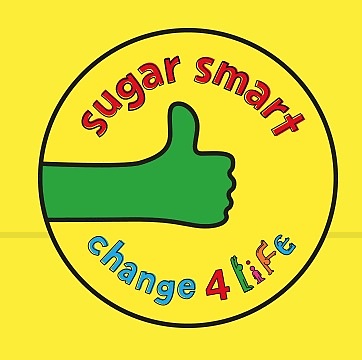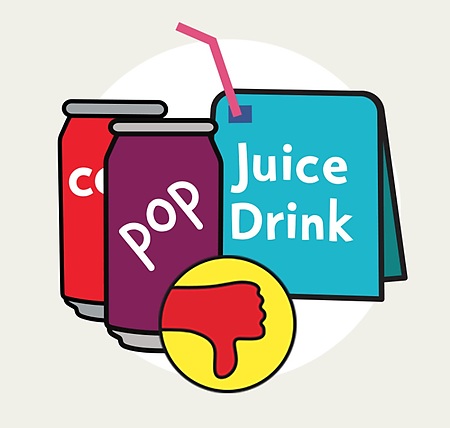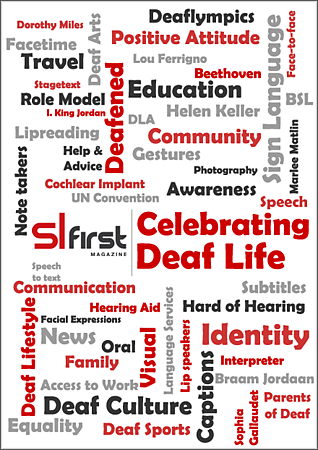Products4th January 2016
Deaf Friendly App Opens up Nutrition Information for Deaf Community
With increased health risks, it's in all our interests to be sugar aware
 I don't know about you, but with sugar packed into so many different types of food these days, it seems to be getting more and more difficult to find healthy food or change to a healthier lifestyle. For people who are diabetic, it is even more of a nightmare. Whilst lots of food and drink has nutrition information on the label, I wonder how many people within the Deaf community really understand what that information means or what the recommended daily amounts are for children and adults.
I don't know about you, but with sugar packed into so many different types of food these days, it seems to be getting more and more difficult to find healthy food or change to a healthier lifestyle. For people who are diabetic, it is even more of a nightmare. Whilst lots of food and drink has nutrition information on the label, I wonder how many people within the Deaf community really understand what that information means or what the recommended daily amounts are for children and adults.
 An App hitting the headlines today, has the potential to improve knowledge and understanding of nutritional values within the Deaf community, especially sugar intake, and because it is App-based, it is also deaf-friendly. Public Health England who have launched the App, hope it will help everyone, especially parents of young children, who are urged to download the App and use the barcode reader within it, to understand the amount of sugar being consumed by their family.
An App hitting the headlines today, has the potential to improve knowledge and understanding of nutritional values within the Deaf community, especially sugar intake, and because it is App-based, it is also deaf-friendly. Public Health England who have launched the App, hope it will help everyone, especially parents of young children, who are urged to download the App and use the barcode reader within it, to understand the amount of sugar being consumed by their family.
Already loaded with the breakdown of thousands of food and drink products, the barcode reader can give measurements in either grammes or cubes, with Public Health England reiterating the recommended daily maximum intake for children of added sugar (Meaning sugar that has been added to food and drink to sweeten it) for all ages:
4-6 years
5 cubes or 19 grammes
7-10 years
6 cubes or 24 grammes
11+ years
7 cubes or 30 grammes

Officials at Public Health England hope the use of the new App and heightened awareness of the amount of sugar in the food chain, will help combat tooth decay, obesity and type two diabetes. Ultimately, they hope to encourage families to choose healthier alternatives. On average, Public Health England say that children are believed to be eating three times more sugar than the maximum suggested.
The App is being launched under the new Change4Life Campaign, which includes the sugar App, but which also includes other helpful Apps as well. There is an opportunity to use recipes and improve children's knowledge of the food and drink they are consuming.
Staggeringly, the information provided by Public Health England suggests that on average, children aged four to ten years old are consuming 22kg of added sugar a year. If you're wondering what that might look like, it's the equivalent of 5,500 sugar cubes, or more than the weight of an average five-year-old child.
 This latest app within the Change4Life Campaign, has been developed to raise awareness of just how much sugar there is in the food and drink that forms part of our daily diet. Child friendly dishes like pizza, lasagne and spagetti bolognese are often loaded with sugar, but the fear is that mums, dads and people with diabetes don't realise that is the case.
This latest app within the Change4Life Campaign, has been developed to raise awareness of just how much sugar there is in the food and drink that forms part of our daily diet. Child friendly dishes like pizza, lasagne and spagetti bolognese are often loaded with sugar, but the fear is that mums, dads and people with diabetes don't realise that is the case.
At the moment, the App works on more than 75,000 products, but it is hoped that the product base will expand to give people the sugar information that could address many of the lifestyle health risks faced by adults and children within the Deaf community.

Despite thinking we are watching what our children eat and drink, it is easy to allow them to consume over the maximum limit because of the amount of added sugar in some of the things children like most. For example:
* a can of cola - nine cubes of sugar
* a chocolate bar - six cubes of sugar
* a small carton of juice - more than five cubes of sugar
Dr Alison Tedstone, chief nutritionist from Public Health England, said children were having too much sugar in their diets and this was leading to painful tooth decay, weight gain and the potential for serious health problems in later life.
Overweight and obese adults are more at risk of heart disease, type 2 diabetes and some cancers, with a sugar laden diet also putting a high demand on dentistry services.
 "If there's one thing I'd strongly encourage parents to do," Dr Tedstone commented, "that's to swap sugary drinks out of their kids' diets for either a low-sugar drink or water or low-fat milk, which would be a really excellent choice."
"If there's one thing I'd strongly encourage parents to do," Dr Tedstone commented, "that's to swap sugary drinks out of their kids' diets for either a low-sugar drink or water or low-fat milk, which would be a really excellent choice."
She also said people might be surprised to discover the sugar contents, for example, of some yogurts and fruit drinks.
In the past, Public Health England have supported calls for a tax on sugar in foodstuffs as well as calling for reduced marketing of sugary food and drinks towards children in stores, on TV and online. As one of the frequent buy one get one free products, supermarkets are also making it difficult for families to make good choices.
The sugar smart app is free to download and is available in botn the Apple and Google on-line stores.
 You can join the Change4Life programme and in addition to the barcode reader, you can access tips, vouchers and recipes.
You can join the Change4Life programme and in addition to the barcode reader, you can access tips, vouchers and recipes.
Every day, often without realising it, many of us are eating way too much sugar than is good for us. Try the App as I have done, and you will be surprised at the amount of added sugar lurking in everyday food and drink - and it builds up quickly over the day, week and month.
Typically:
* Sugary cereal has 2 cubes
* Sugary Yoghurt has 5 cubes
* Chocolate Digestive has over 1 cube in 100gms
* Jaffa Cake biscuits over 3 cubes per 100gms
* Baked Beans over 2 cubes in half a tin
* Cinnamon Bun has 13 cubes
It's easier than you think to cut down on sugar. Start with these simple tips:
1. Download the Sugar Smart App
2. Make some sugar swaps
3. Have smaller portions
4. Eat sugary food less often
5. Try the SugatSmart recipes
Photos from Sugar Smart website: https://www.nhs.uk/change4life-beta#mBQ7iTrLtIxZA8yK.97
Article by Sarah Lawrence, Editor
posted in Technology / Products
4th January 2016





